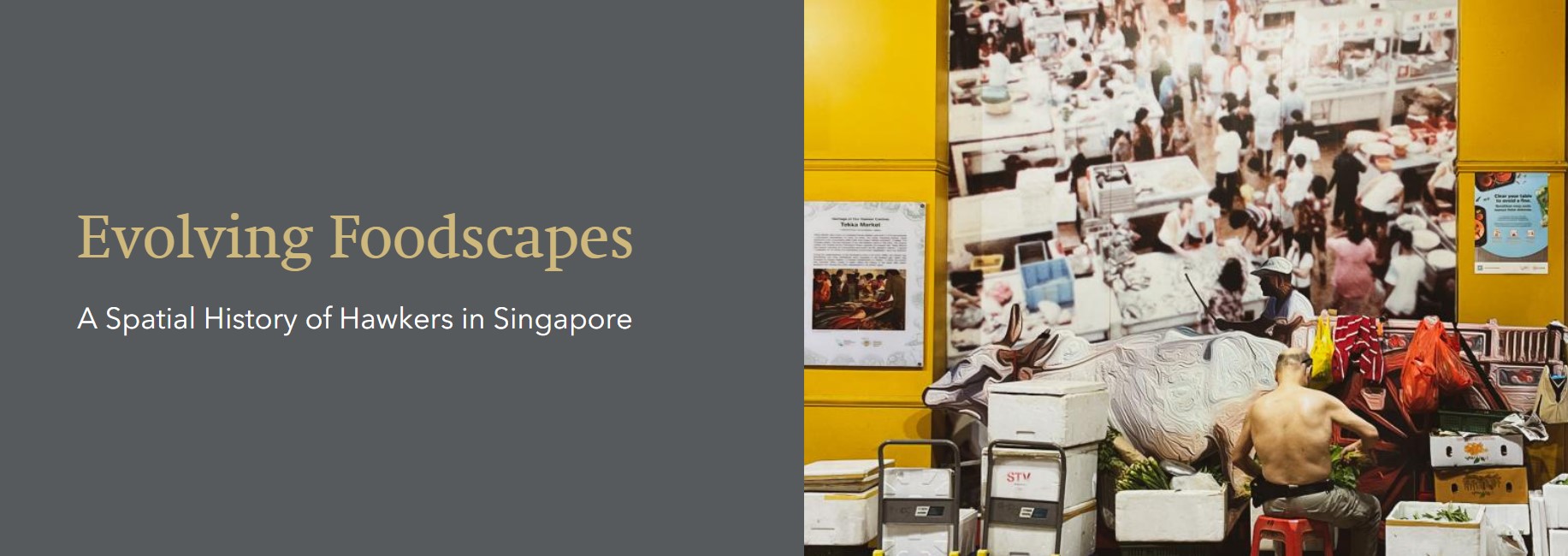Urban Oasis
In less than a decade after the launch of the Jurong Industrial Estate, Jurong evolved into a bustling hub of factories and workers, becoming the centerpiece of Singapore’s industrialisation efforts. By the end of 1967, the estate had attracted investments totaling about S$178 million in fixed assets and provided jobs for approximately 6,500 workers. However, Dr. Goh Keng Swee envisioned Jurong not only as an industrial estate but also as a town. This vision prompted the development of housing estates, recreation facilities, town centers, and flats in Jurong.
Building Housing Estates in Jurong
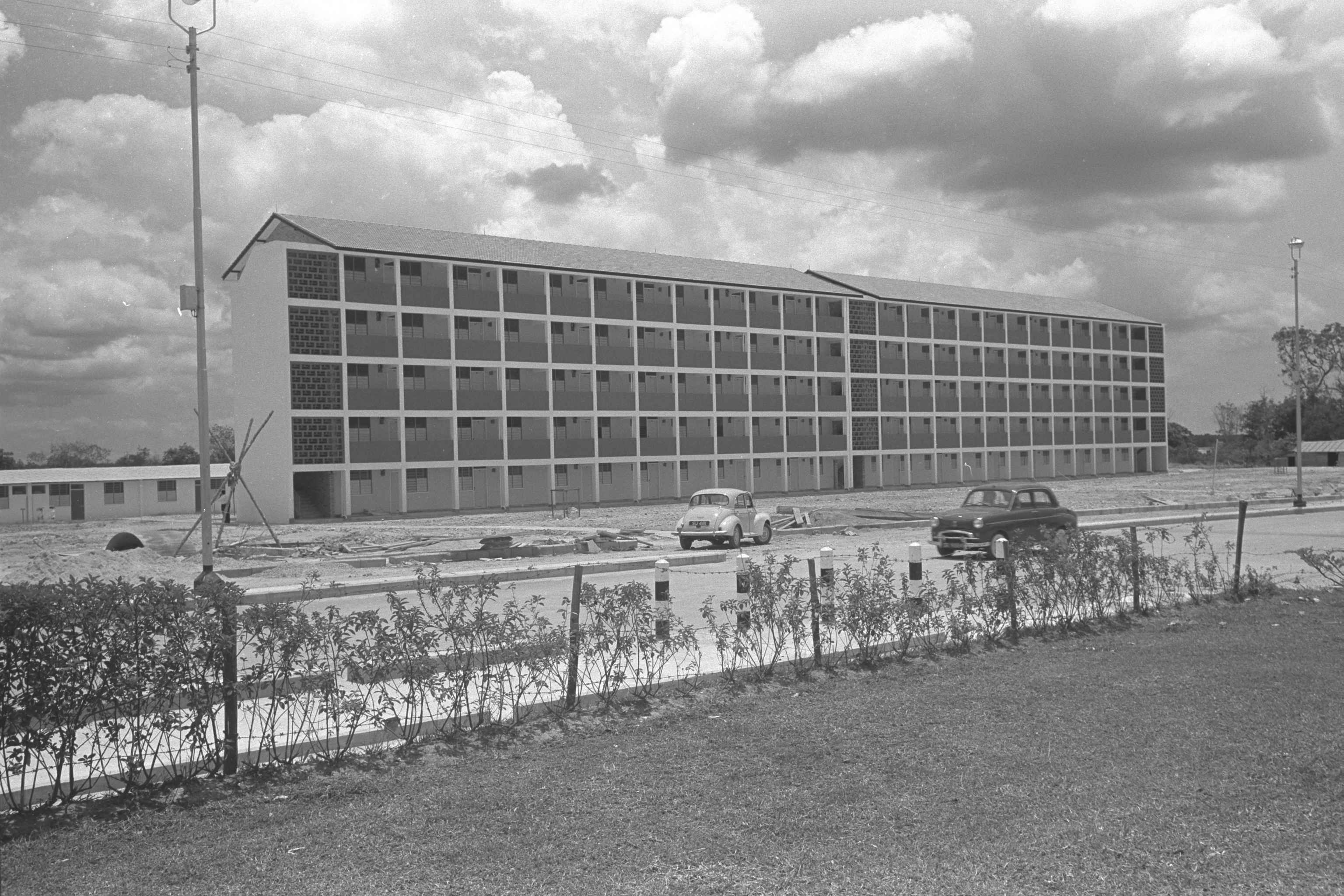 |
| Taman Jurong, originally known as Neighbourhood I, stands as the inaugural housing estate in Jurong. Established in 1963, it was primarily constructed to accommodate the workforce of the burgeoning industrial estate. The initial flats in Taman Jurong consisted mainly of one- and two-room units. Initially, these units faced low demand due to the lack of social amenities in the area. However, as the infrastructure and amenities improved, more people expressed interest in residing in Jurong Town. By the end of 1968, all 4,400 flats were occupied, and approximately 16,000 people called Taman Jurong home. Responding to the increasing demand, JTC not only constructed more flats, but also introduced “improved” types. These upgraded flats were more spacious than the standard ones of that era, featuring enhanced room layouts. Moreover, they were housed in taller multi-storey buildings, significantly altering the architectural landscape of Jurong. (Image Credit: Ministry of Information and the Arts Collection, courtesy of National Archives of Singapore) |
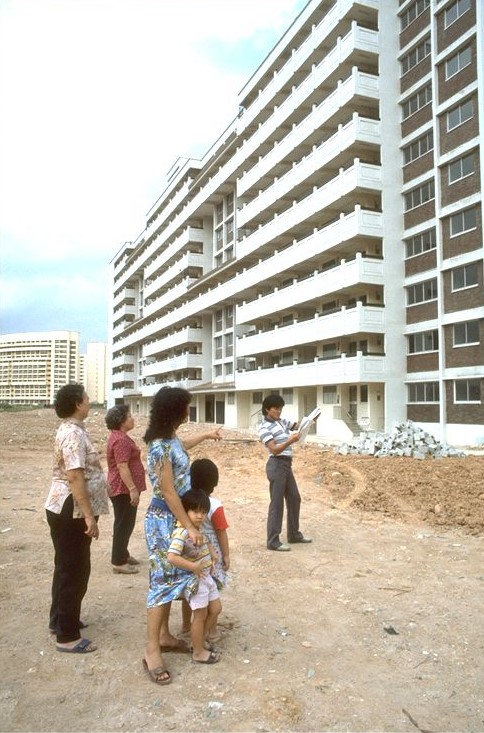 |
| Throughout the 1970s, Jurong witnessed the construction of more housing estates, including Boon Lay Gardens, Teban Gardens, and Pandan Gardens. Initially designated as Neighbourhood I, II, III, and IV, these new estates were strategically situated farther away from the heavy and medium industries along the coast near Jalan Ahmad Ibrahim road. This was done to ensure that residents enjoyed a more pleasant living environment. (Image Credit: Ministry of Information and the Arts Collection, courtesy of National Archives of Singapore) |
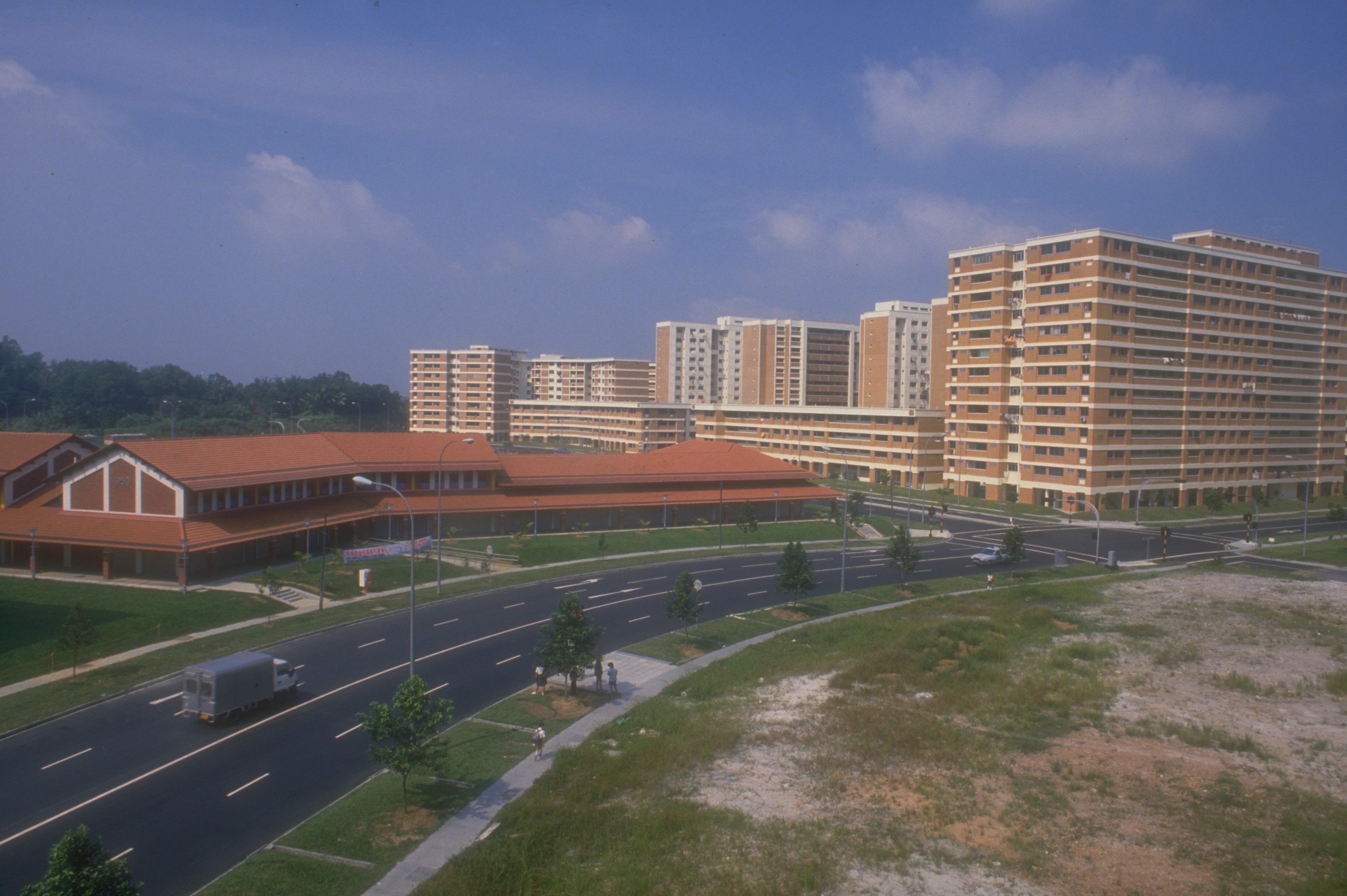 |
| In the newer neighbuorhoods of Boon Lay Gardens, Teban Gardens, and Pandan Gardens, housing options predominantly consisted of larger three-room and executive flats, a departure from the smaller one- and two-room flats. Notably, JTC made a strategic decision to discontinue the construction of one- and two-room flats when these neighbourhoods were being developed. (Image Credit: Ministry of Information and the Arts Collection, courtesy of National Archives of Singapore) |
Moving to a new flat is undeniably one of the most captivating and proud moments for many families in Singapore. Beyond being a significant milestone and life achievement, the anticipation of a new home fosters an endearing and priceless experience. This sentiment is shared not only by present-day families but also by those from the nation-building years, including the pioneer residents of Jurong such as the former Chief Executive Officer of Jurong Town Council Teo Ho Pin. Click or tap HERE to read an account of his experience on moving into one of the first flats in Taman Jurong at Block 44 at Yung Seng Road. (Source: National Archives of Singapore)
"Because Taman Jurong was a newly built industrial town. At that time not many flats were built by JTC, the Jurong Town Corporation. I think he was working in that area. He was quite familiar with Taman Jurong area, that's why he decided that maybe we should move to Taman Jurong.
I would say that in those days Taman Jurong was basically a very small village. There are only a couple of blocks and not many residents around. So many of the residents would have known each other. And I would say that it is a very laidback, very simple way of life during that time.
How many football fields... Based on that time when it was developed, I would have guessed it is maybe close to 50 football fields. It should be around there. Because the whole Taman Jurong was not fully developed. Now when I first moved in to Block 44 at Yung Seng Road, it was a three-storey building. Common corridor, common bin chute, and you can see the construction is very basic. It is a one-room flat, so we stayed in a one-room flat during that time.
The living conditions were very simple. Basically you have a room; you have a small kitchen, one toilet. And a bedroom cum living room, cum everything. Multi-purpose room.”
Building Amenities and Recreation Spaces
The growth of Jurong Town was not an instant success, as initially, not many people wanted to live there. One reason was that it seemed far away from the rest of the island, making it less appealing. To enhance Jurong’s appeal as a residential area, initiatives were implemented starting in the late 1960s. These included the introduction of housing allowances, improved bus services, and the establishment of amenities and recreational spaces. These spaces ranged from sports facilities, retail shops, community centers, wet markets, and hawker centers to public parks and gardens.
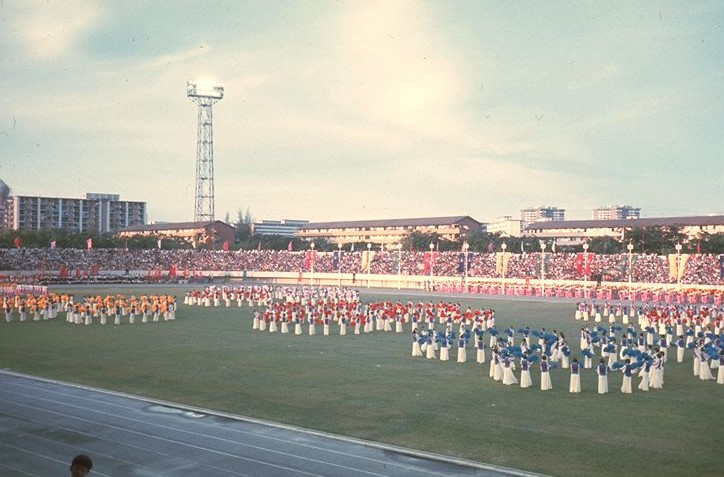 |
| The former Jurong Stadium was among the first recreational facilities built in Jurong. Completed in 1973, it was situated along Corporation Road in Taman Jurong. The stadium had a flat design and included a covered grandstand gallery overlooking a grass pitch encircled by an asphalt running track. Four tall iron truss structures, positioned at the corners, supported the floodlights. Until its demolition in 2020, the stadium provided sports and recreational facilities for local residents. Additionally, it served as one of the venues for decentralised National Day celebrations in the 1970s and 1980s, with the first taking place in 1975. The stadium was also used for various Singapore Armed Forces (SAF) ceremonies and parades, including Infantry Officers’ commissioning parades and color presentation ceremonies for the Singapore Guards. Today, the residents of Jurong are served by stadiums such as Jurong East and Jurong West Stadiums. (Image Credit: Ministry of Information and the Arts Collection, courtesy of National Archives of Singapore) |
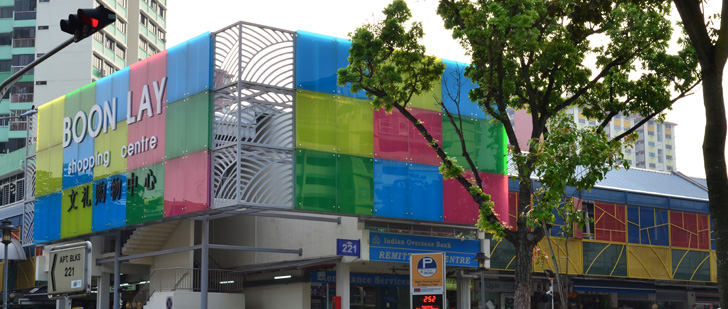 |
| Completed in 1978, Boon Lay Shopping Centre stands as one of the oldest shopping centers in Jurong. Located along Boon Lay Drive in Jurong West, the shopping center comprises a shopping podium with 102 shops on the ground and first floors, along with a department store, a supermarket, coffeeshops, and a restaurant on the first and second floors at the time of its opening. After over 40 years of operation, the shopping center underwent upgrades in 2012, featuring a new facade and improved facilities such as escalators and elevators. Nevertheless, the shopping center has retained its original architecture and nostalgic charm, continuing to serve residents with a variety of mom-and-pop shops, money changers, stores catering to foreign workers, and travel agencies offering trips to Malaysia. (Image Credit: Courtesy of Housing Development Board) |
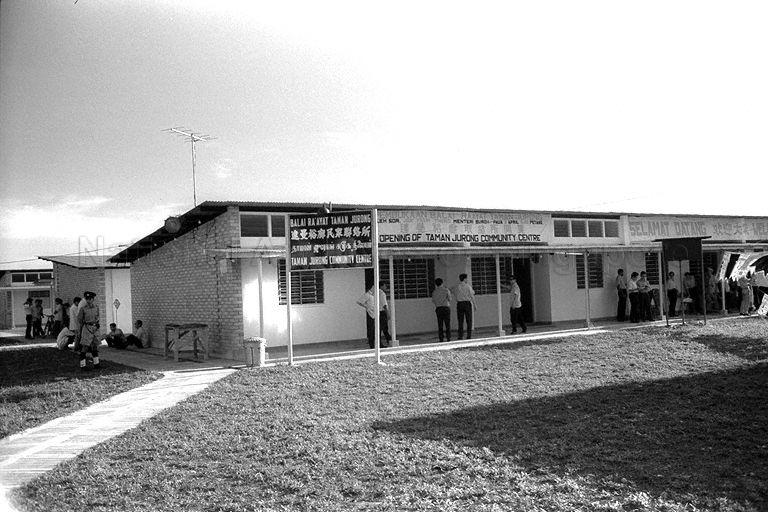 |
| Taman Jurong Community Centre, now known as Taman Jurong Community Club, stands as one of the first community centers established in Jurong. Inaugurated by then Minister for Labour Jek Yuen Thong in 1965 at Block 33 of Jurong Industrial Housing Estate, it provided early residents of Taman Jurong a space for socializing and recreation. The community center featured a basketball club and a clubhouse where activities such as sepak takraw and table tennis could be enjoyed. The premises were utilised by local schools for sports activities and by the community for various events, including blood donation campaigns and Chinese New Year fireworks displays. Additionally, the National Library used it for its mobile library. In 1976, the community center relocated to a new three-storey building at Yung Sheng Road, where it stands today. (Image Credit: Ministry of Information and the Arts Collection, courtesy of National Archives of Singapore) |
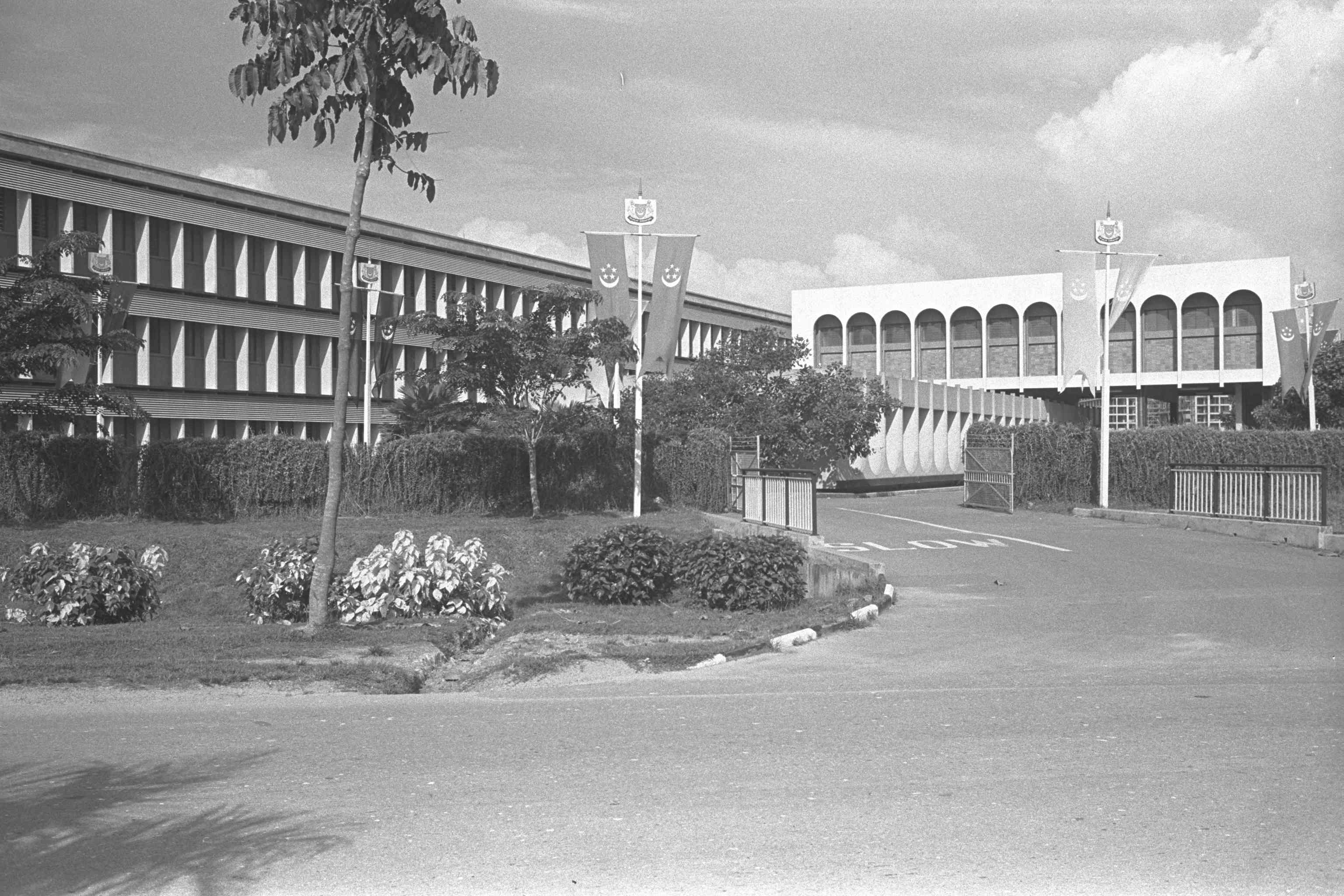 |
| The Jurong Vocational Institute was one of the first schools built in Jurong following its industrialization. Located along Jalan Boon Lay, it was completed in 1969. In 2000, the school was relocated to Bukit Batok and renamed ITE. (Institute of Technical Education) Jurong. (Image Credit: Ministry of Information and the Arts Collection, courtesy of National Archives of Singapore) |
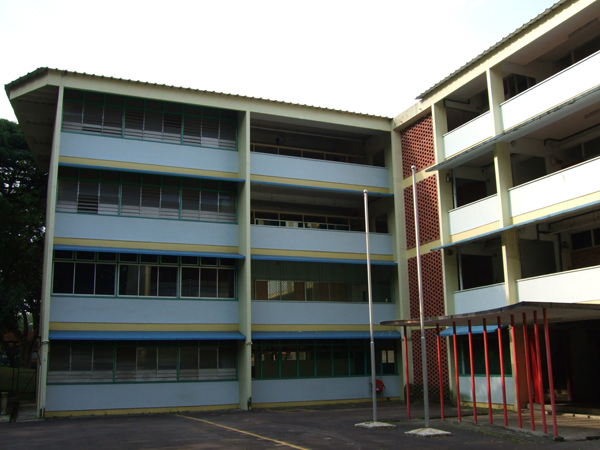 |
| In addition to Jurong Vocational Institute, several other schools were established in Jurong Town during the 1960s and 1970s. These included Jurong Town Primary School (1968), Boon Lay Garden Primary School (1977), Yung An Primary School (1977), Merlimau Primary School (1977), Yung Ching Secondary School (1977), and Boon Lay Secondary School (1977). Featured here is an undated photograph of Jurong Town Primary School, which later merged with Merlimau Primary School and Yung An Primary School to form Lakeside Primary School in 2003. (Image Credit: Courtesy of Singapore Land Authority) |
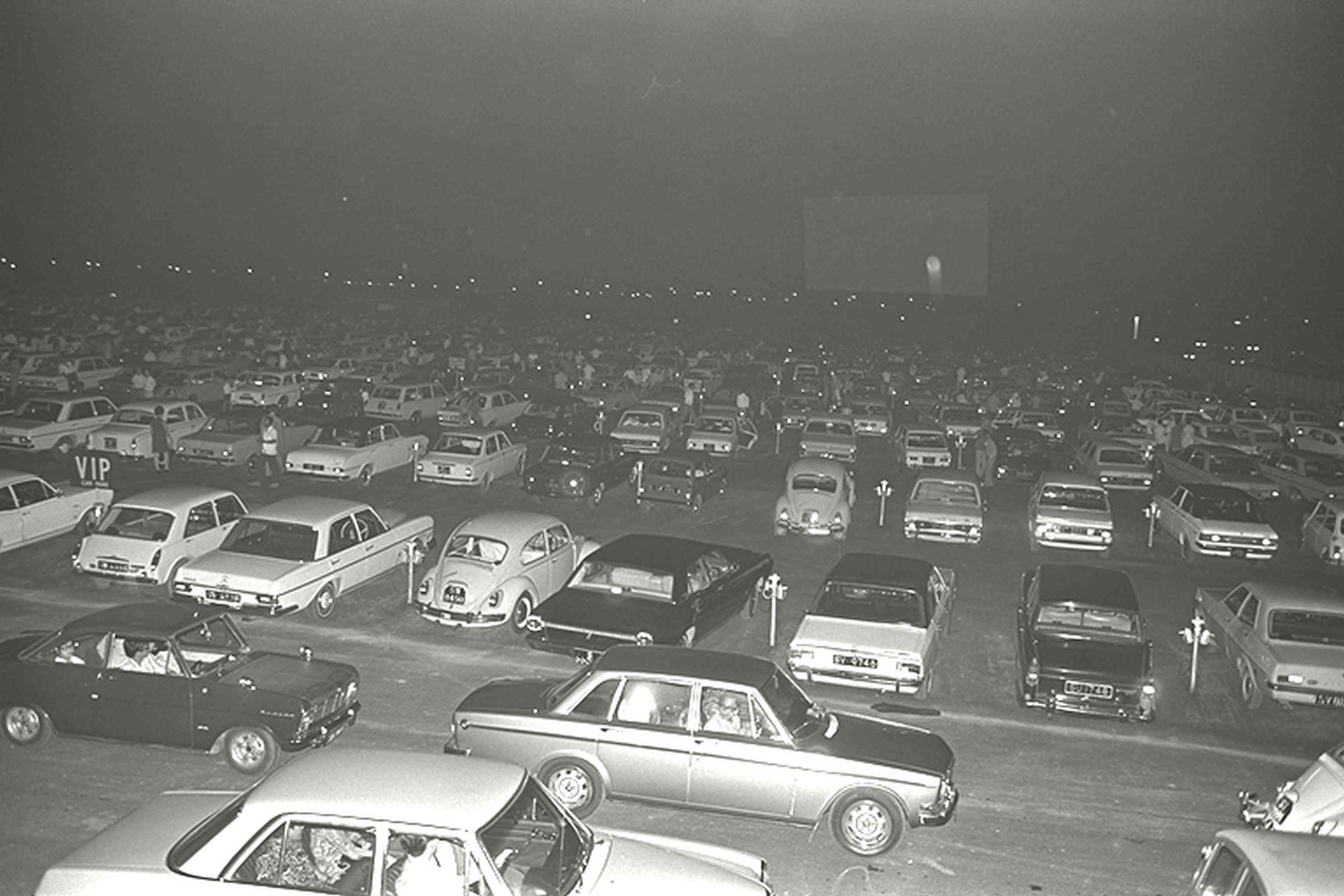 |
| Jurong Drive-in holds the distinction of being Singapore’s first open-air cinema. Unveiled on 14 July 1971 by then Minister of Culture, Jek Yuen Thong, it was originally situated next to the Japanese Gardens. Conceived by Cathay Organisation, this cinema was the largest drive-in facility in Asia, accommodating 900 cars and an additional 300 people in its walk-in gallery. The cinema provided a unique movie-watching experience for patrons, allowing them to enjoy English and Hong Kong films on a giant television screen from the privacy of their cars. It stood as one of the few places in Jurong and across the island suitable for family outings. However, as the novelty wore off, combined with challenges such as unpredictable weather and the proliferation of air-conditioned cinemas in shopping malls and other attractions, Jurong Drive-in Cinema was compelled to close its doors in 1985 after 15 years of operation. (Image Credit: Ministry of Information and the Arts Collection, courtesy of National Archives of Singapore) |
Click or tap HERE to find out from former Chief Executive Officer of Jurong Town Council Teo Ho Pin on how unique was the Jurong Drive-in Cinema. (Source: National Archives of Singapore)
"The drive-in cinema came about in the seventies..It was quite an excitement because that was the first drive-in cinema in Singapore. For us kids, we enjoyed because of the big screen it has a very big screen and…with all the speakers wired up, you actually can hear the movies from the side of the perimeter fencing. So although it has got fencing around the drive-in cinema, if you were to stay at a certain spot of the fencing, you actually can hear the movie. So you can watch the movie for free. That is the reason why I told you I watched this Bruce Lee show \[called\] “Fist of Fury” almost ten times. Because it is literally free…Every night there would be a movie, every night. So we would have a movie every night. Normally it is one show, 7.30pm to 9.30pm. Only one show. Sometimes there are two shows but most of the time it is one show. Weekends normally \[have\] two shows. Almost every night the movie is on…\[But\] when you drive to the drive-in cinema, first of all you have to switch off the car engine, you have to wind down the windows. So it becomes hot and humid. Then the mosquitoes ... so it becomes not so comfortable as compared to an air conditioned room, cinema. So I think at that time after the novelty or a couple of years the audienceship also dropped. As a result they couldn't survive. That was the reason why they closed the drive-in cinema…\[But\] it can be quite big \[during its heyday\]. When it was \[showing\] movies it was almost full house. When it is full house I think you can have easily a hundred over cars inside there. Quite a big drive-in cinema. At that time it was a novelty and you do see quite a lot of people from different parts of Singapore coming over to Jurong drive-in cinema. \[It shows\]...Chinese movies mainly…A lot of kungfu movies \[like\] “One Arm Swordsman” \[and\] different types of movies by Wang Yu (王羽).”
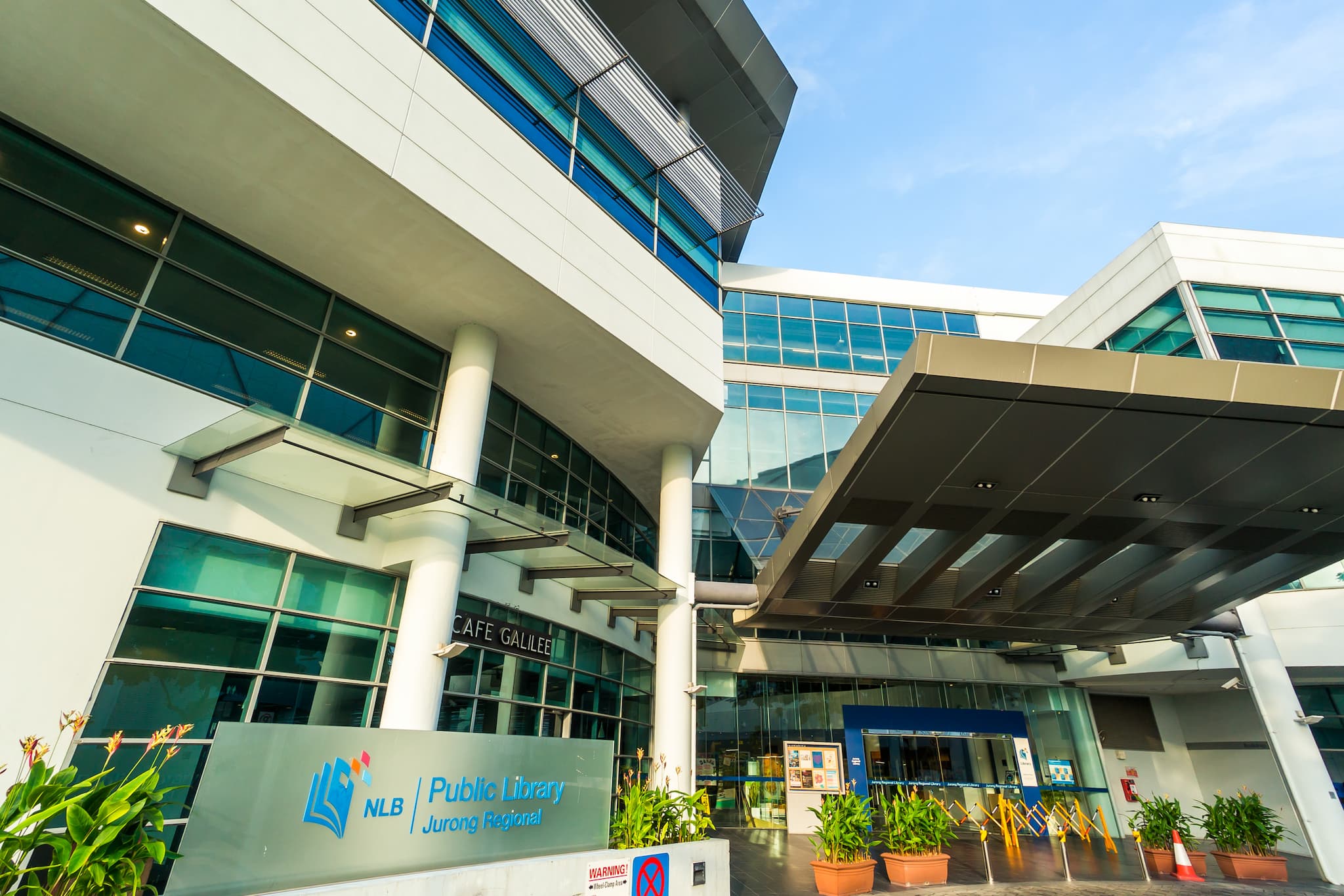 |
| Jurong Regional Library, located at 21 Jurong East Central 1, is the fourth regional library in Singapore, following Woodlands, Tampines, and Punggol Regional Libraries. Originally opened as Jurong East Community Library in 1988, the library underwent extensive upgrades in June 2003 and officially reopened in June 2004. Spanning four storeys and a basement, the library covers an estimated area of 12,020 square metres. It holds the distinction of being the first public library in Singapore with a skylight and employs energy-saving reflector light technology. In terms of services, Jurong Regional Library serves as a one-stop information, reference, and recreation centre for residents in the Jurong area, offering a wide selection of learning resources, programs, services, and facilities. In 2028, the library is scheduled to relocate to new premises in the Jurong East Integrated Transport Hub situated at Jurong East MRT station. (Image Credit: National Library Board) |
 |
| In 1974, the Jurong Ice Skating Centre opened its doors. Situated along Yuan Ching Road in Taman Jurong, this S$9 million facility was the first ice skating rink in Singapore and Southeast Asia at the time. Skaters were charged S$2.50 for a two-hour session on weekdays and the same price for an hour during weekends, with the rink capable of accommodating up to 1,000 skaters. Initially, the skating centre was very popular, but its novelty diminished shortly, leading to its closure merely four years later in 1978. Subsequently, in 1994, Jurong opened another ice skating centre when Fuji Ice Palace Rink relocated its operations to the Jurong Entertainment Centre (later renamed JCube) from the former Rex Theatre in McKenzie Road. Equipped with an Olympic-sized rink, Fuji Ice Palace Rink was renamed The Rink@JCube in 2011. It became a popular venue for ice-skating, ice hockey, and curling, attracting athletes and skaters of all levels before the rink was closed down in August 2023. (Image Credit: Photo by Choo Yut Shing via Flickr (CC BY-NC-SA 2.0 DEED)) |
The Jurong Ice Skating Centre offered the residents of Jurong as well as the rest of Singapore a recreation activity that was not only exciting, but also completely new. Click or tap HERE to read former Chief Executive Officer of Jurong Town Council Teo Ho Pin's account of the skating centre after it opened its doors in 1974. (Source: National Archives of Singapore)
"Taman Jurong has the first skating rink, if I remember, in Singapore. And during those days we will queue up to go for the ice skating activity. And those days the ice skating rink was packed with a lot of users. And we used to have figure skating, ice hockey; a lot of fun because it is something really new. And as a young boy you find it quite challenging to do skating activities. So I would say that the ice skating rink was a very good facility provided at that point of time.”
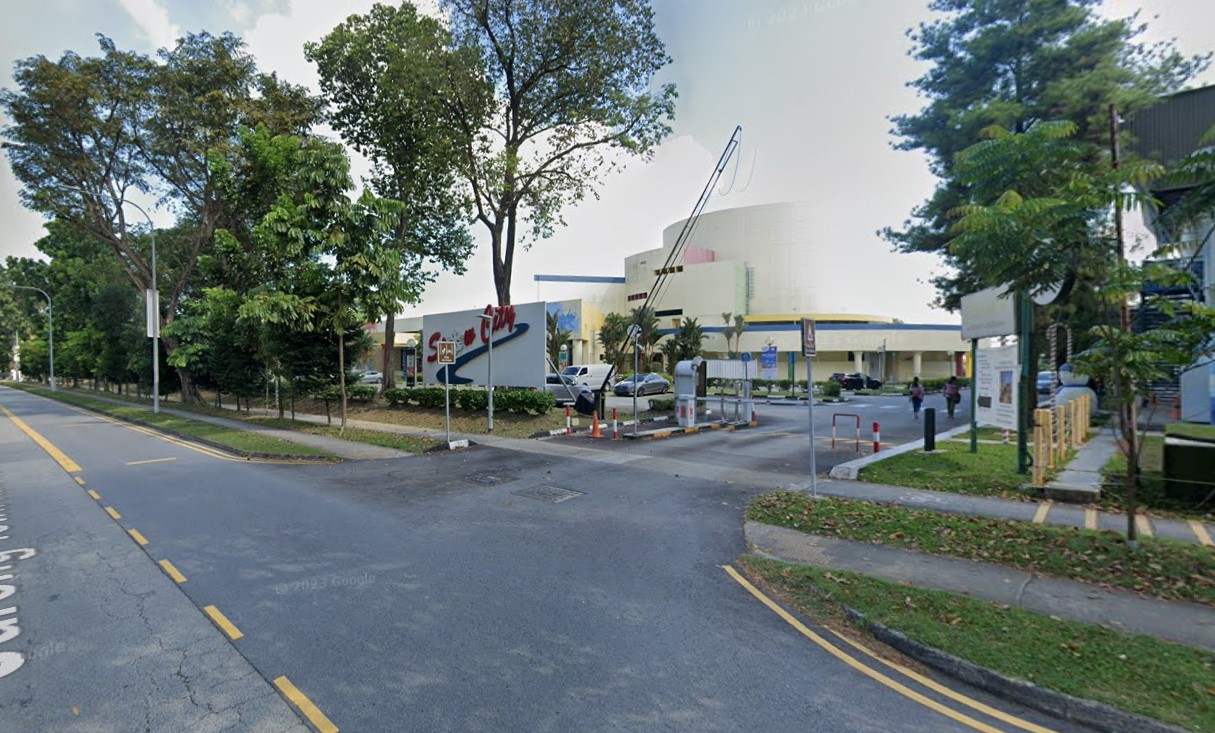 |
| Snow City is Singapore’s first permanent indoor snow centre, which opened in 2000. The centre is located beside the Singapore Science Centre and features a snow chamber that provides a year-round snow experience. The snow level is consistently maintained at a depth of 400mm, requiring up to 150 tons of snow to cover the grounds. This translates to producing about 10 to 15 tons of snow each week to sustain the desired snow level. The center is renowned for its three-storey high and 60-meter long snow slope, offering visitors the opportunity to enjoy snow tubing. (Image Credit: Map data ©2023 Google) |
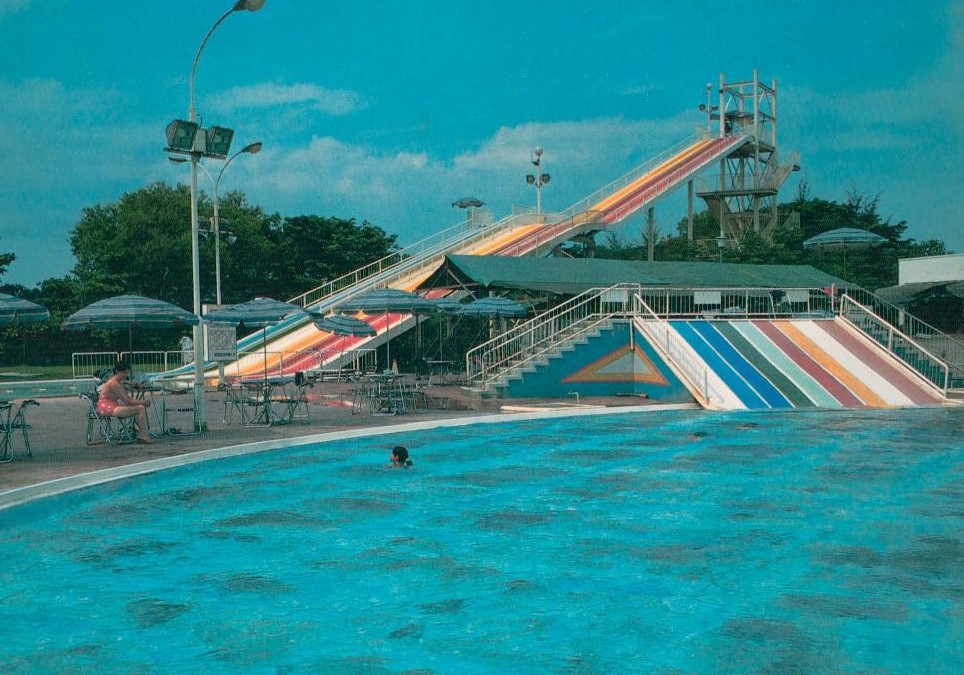 |
| The Mitsukoshi Garden, located at 9 Japanese Garden Road, was a $10 million joint venture between Mitsukoshi and the Jurong Water Sports Complex. Opening its doors in April 1979, this aquatic center featured various water facilities, including an Olympic-sized swimming pool, a wave pool, children’s pools, and water slides. In addition to these, it also offered amenities such as tennis courts, a putting green, restaurants, bars, function rooms, and a shopping arcade. A popular venue for families, Mitsukoshi Garden was sold to West Overseas in June 1983, underwent renovation, and reopened later that year as CN West Leisure Park. Pictured here is a photograph of Mitsukoshi Garden in the 1980s. (Image Credit: Courtesy of National Museum of Singapore, National Heritage Board) |
Building New Hawker Centres
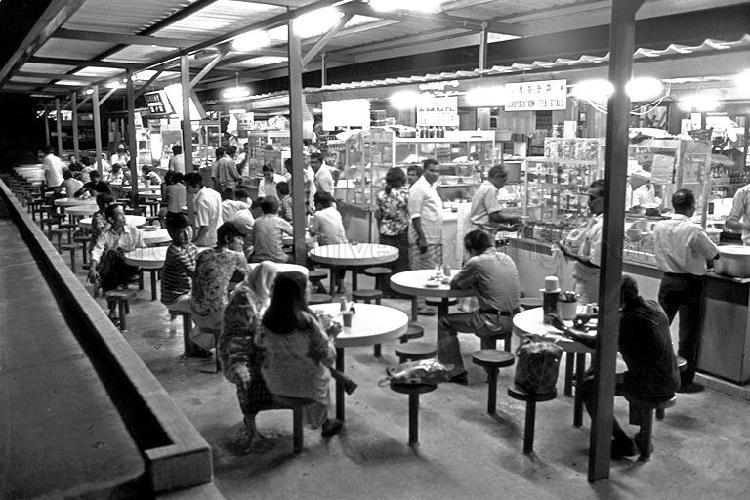 |
| In addition to housing estates, recreational spaces, and social amenities, the residents of Jurong Town were also treated to a range of hawker centers. The first hawker center built there was Yung Sheng Food Centre, located at 3 Yung Sheng Road. This hawker center holds the distinction of being Singapore’s first and was sometimes referred to as “60 stalls” (or “liu shi tan” in Mandarin), named after the 60 stalls that opened together with the hawker center in July 1972. (Image Credit: Singapore Press Holdings) |
What were the food offered in Yung Sheng hawker centre. Click or tap HERE to find out from former Chief Executive Officer of Jurong Town Council Teo Ho Pin. (Source: National Archives of Singapore)
"\[T\]hey call it the Lak Chap Tua \[六十摊\] which is a sixty-stall hawker centre…You will find that the sixty stalls have a wide variety of food, mainly for supper…That sixty-stall hawker centre became alive at night, every night….I know the fishball noodle is good, the tzi char is good, the hokkien mee is good. They have quite a number of famous stalls…My favourite is always hokkien mee, fishball noodles. My team football captain actually the family runs a Teochew fishball stall. It is well known, it is called Ng Kee Fishball noodle stall. Till today they are still running the stall but it is at the hawker centre in Taman Jurong now \[at\] Block 399.”
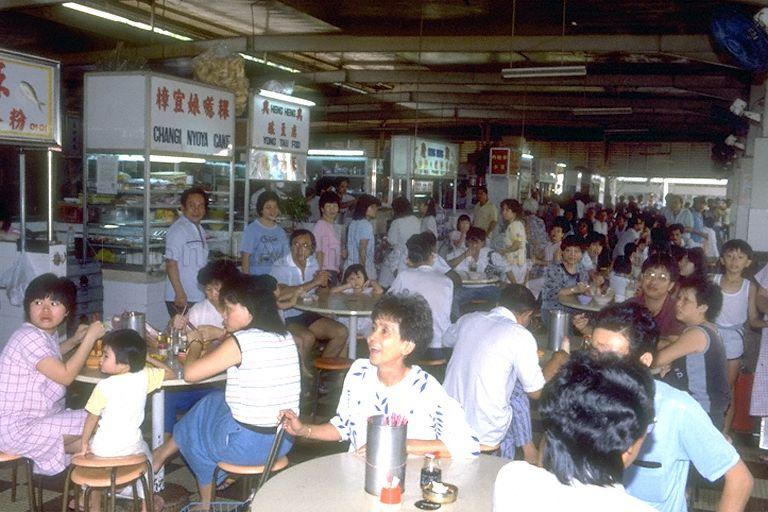 |
| During the 1970s, Jurong Town had several hawker centers, including Jurong Market I, Taman Jurong I Food Centre, Jurong II Market, and Taman Jurong II Food Centre. In 1979, as part of a renaming exercise by the then Ministry of Environment, these centers were renamed Corporation Drive Market, Corporation Drive Food Centre, Taman Jurong Market, and Taman Jurong Food Centre, respectively. The renaming aimed to provide a clearer identity to each establishment. Pictured here is a photograph of a hawker center in Singapore during the 1980s. (Image Credit: Ministry of Information and the Arts Collection, courtesy of National Archives of Singapore) |
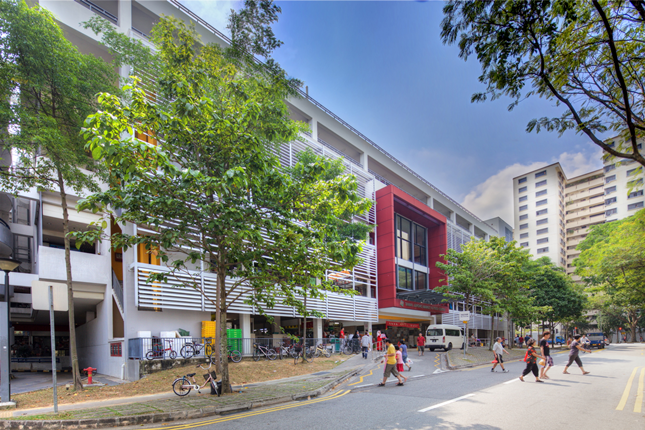 |
| Today, Taman Jurong Market and Food Centre along Yung Sheng Road is the result of the amalgamation of three hawker centres: Corporation Drive Market, Corporate Drive Food Centre, and Yung Sheng Food Centre. Opened in 2005, the new food centre accommodates many hawkers from the original centers. Designed with patrons in mind, the food centre features a ventilation system that ensures good air circulation, along with a variety of seats suitable for both large and small families. The layout of the food centre includes a central courtyard, allowing natural sunlight to stream into the dining area. This, combined with enhanced ventilation, fosters better interaction between patrons and provides a conducive space for families to gather and enjoy a meal. (Image Credit: Courtesy of National Museum of Singapore, National Heritage Board) |
Former Chief Executive Officer of Jurong Town Council Teo Ho Pin also shared how he remembered the trades in the pasar malam (or night market) beside Yung Sheng hawker centre. Click or tap HERE to find out more. (Source: National Archives of Singapore)
"The night market mainly you have the street performers, then you have people selling different things. Mainly *tieda* \[铁打\] medicated oil…not so much food. Because the hawker centres already have a wide range of food. So you don't have many food stalls outside. Occasionally you will find people selling chestnuts. Sometimes they sell peanuts. But the majority are mainly street performers \[doing\] *tieda*…they tell you if you get injured, this is where you can buy this sort of medicated oil to massage your muscles and so on. There were many of these and some of course they have religious items they sell…\[and these\] vendors were not licensed.”
Want to find out where you can eat in Jurong? Check out this food guide by SETHLUI.com below.
Evolving Foodscapes: A Spatial History of Hawkers in Singapore
Between 2022 and 2023, our Digital Research Fellows, Bryan Wee, Brian Page, and Amy DePierre from the University of Colorado Denver, initiated a research project exploring the historical and geographical evolution of hawkers in Singapore. This project utilized collections from the National Library Board of Singapore (NLB) and the National Archives of Singapore (NAS). Employing a spatial history approach, the research traced the transition of hawkers from their mobile street vending origins to fixed center stalls.
Spanning four eras from late-colonial to the present day, the uniqueness of the project lies in its utilization of interactive story maps that integrate archival materials with GIS mapping, data visualization, and digital storytelling techniques. These story maps provide readers with an immersive experience and valuable insights into the history of hawkers in Singapore through the lens of digital humanities research.
Click the image below to launch the story map.
Building Parks and Gardens
JTC also ensured that its housing estates were designed with ample recreational areas and green spaces. During the planning phase, approximately 580 hectares of land, equivalent to 12% of the total area, were allocated for parks, gardens, and other green spaces. JTC also took into consideration the natural beauty of Jurong by creating a buffer zone in the upper Sungei Jurong area. This buffer zone effectively separated the industrial and residential zones with trees, shrubs, and grassy fields. These initiatives not only introduced a touch of green to Jurong’s industrial landscape but also played a crucial role in preserving a part of the area’s natural heritage.
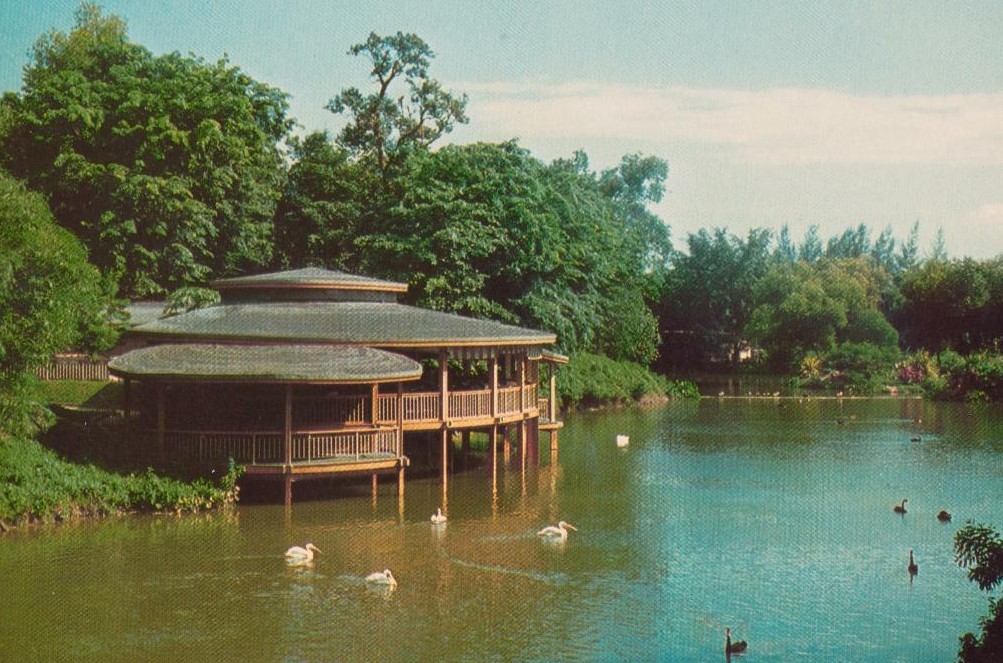 |
| The 17-hectare Bird Paradise in Mandai was formerly known as Jurong Bird Park. Officially opened in January 1971, Jurong Bird Park was situated next to Jurong Hill and was one of the key attractions in Jurong. Spanning over 20 hectares, the park was home to more than 5,000 birds across 400 species, and held the distinction of being Asia’s largest bird park. It was conceived by then Minister for Finance, Goh Keng Swee and designed by John Yealland and J. Toovey. Over the years, the S$3.5 million park attracted over 800,000 visitors annually who came to explore its numerous exhibits, including immersive walk-in aviaries such as Lory Loft, Jungle Jewels, and Waterfall Aviary. In 2014, plans were unveiled to relocate the park to Mandai, integrating it into a larger precinct of nature-themed attractions called Mandai Wildlife Reserve. Consequently, Jurong Bird Park closed its doors in January 2023, only to reopen as Bird Paradise in May 2023. (Image Credit: Courtesy of the National Museum of Singapore, National Heritage Board) |
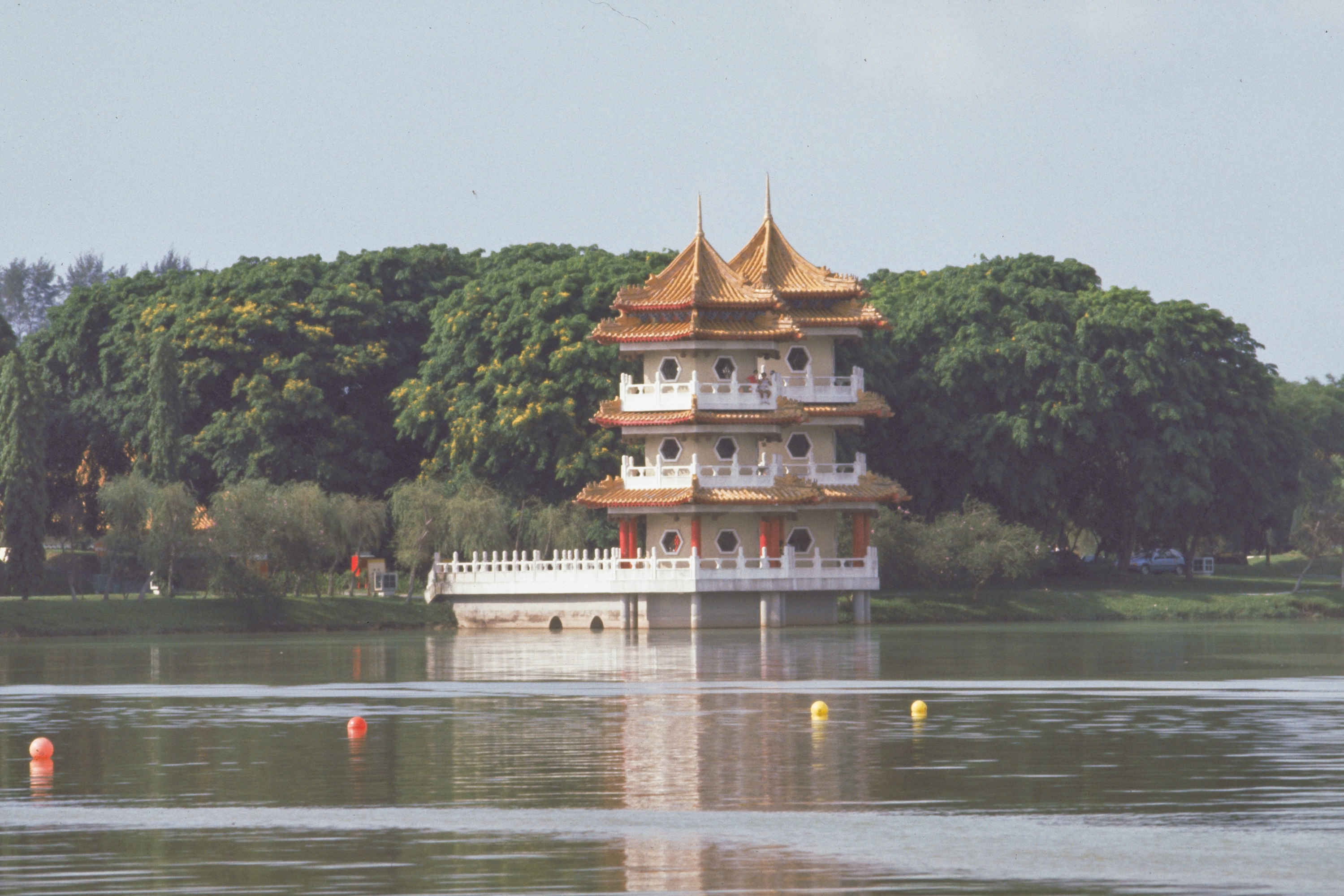 |
| The Chinese Garden (also known as Yu Hwa Yuan) is situated on one of the three man-made islands in of Jurong Lake. It was built in 1975 to provide social and recreational amenities for the residents of Jurong. The 13.5-hectare garden was designed by Yu Yuen Chen, a Taiwanese expert on Chinese gardens, who modeled it after the Beijing Summer Palace as well as the gardens of the Song Dynasty and Suzhou Gardens. Said to be the largest of its kind outside of China at the time, the striking architecture and vibrant colors of the Chinese Garden were intended to contrast with the tranquility of the Japanese Garden. Notable features of the garden include marble stone lions, the 13-arch White Rainbow Bridge, an Arch and Main Gate complex, a Stone Boat and Tea House, and a seven-story pagoda. Currently, it is undergoing redevelopment as part of the development of Jurong Lake Gardens, which is the new national gardens in the heartlands.(Image Credit: Ministry of Information and the Arts Collection, courtesy of National Archives of Singapore) |
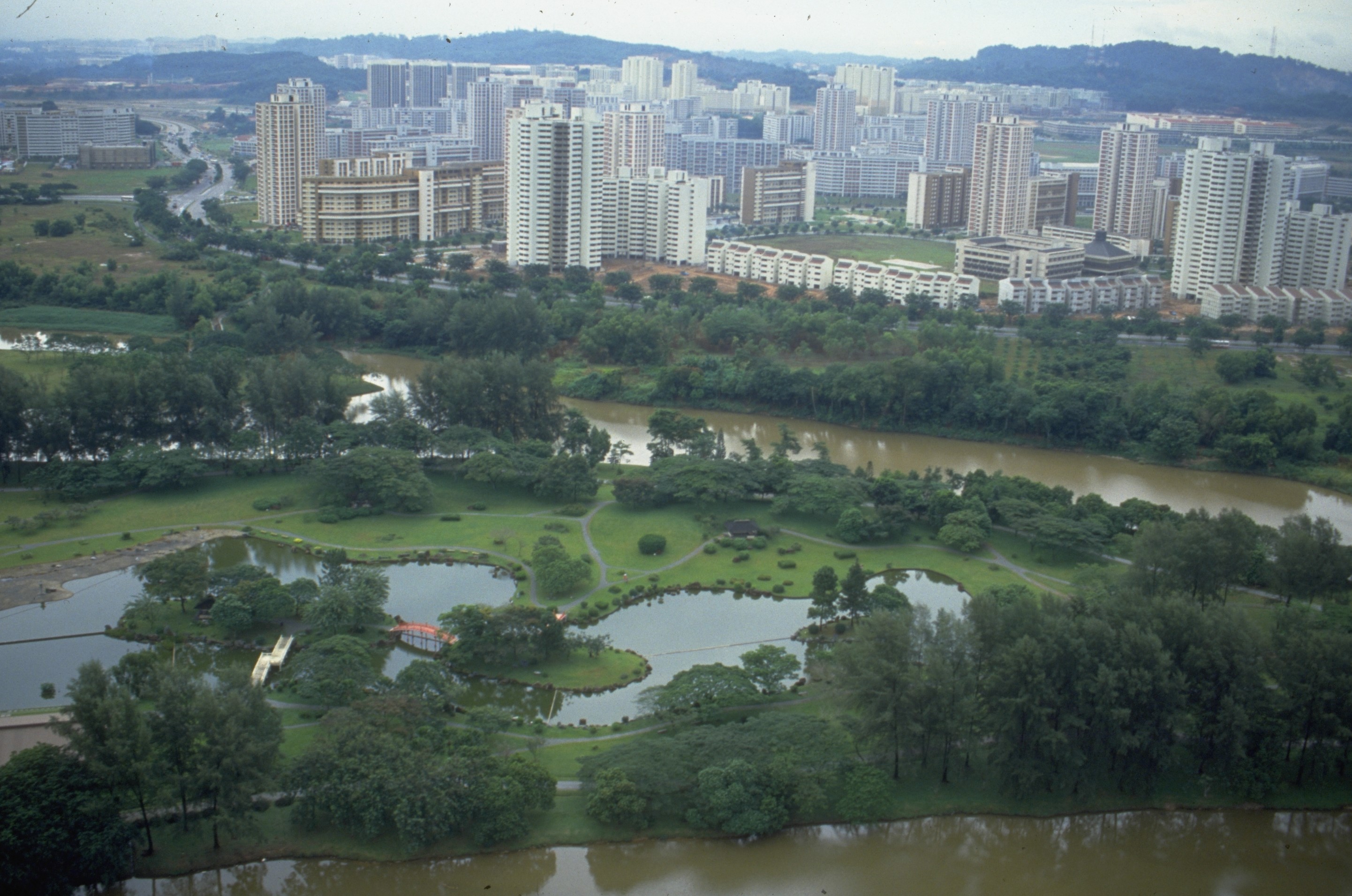 |
| Jurong Lake was formed in 1971 when the upper section of the Jurong River was dammed. The damming process resulted in the creation of three man-made islands, which now house the Chinese Garden, Japanese Garden, and Jurong Country Club. The lake was subsequently transformed into a 70-hectare freshwater reservoir. Presently, ongoing development is transforming Jurong Lake into the Jurong Lake Gardens, designated as the nation’s new national gardens in the heartlands. Referred to as a ‘people’s garden,’ this development aims to provide landscaped spaces for families and the community to gather. The expanded Jurong Lake Gardens, covering 90 hectares, includes Lakeside Garden, the Chinese and Japanese Gardens, and Garden Promenade. (Image Credit: Singapore Tourist Promotion Board Collection, courtesy of National Archives of Singapore) |
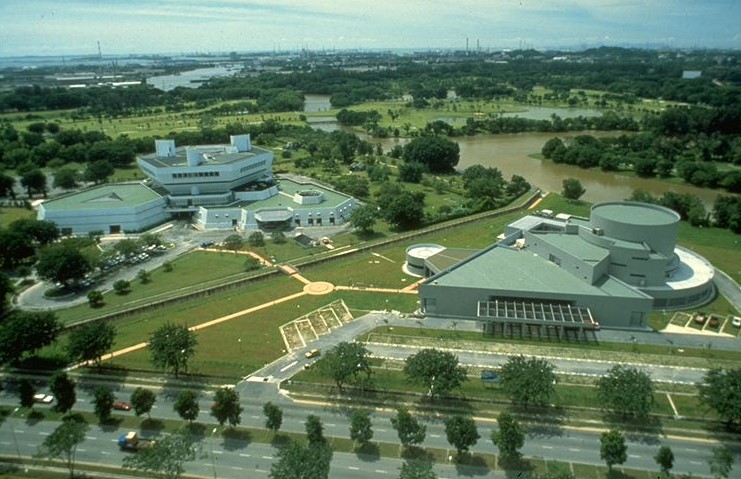 |
| Opened in December 1977, Science Centre Singapore was established to promote interest and learning in science and technology among students and the general public. Located off Jurong Town Hall Road near the eastern bank of Jurong Lake, Science Centre Singapore has undergone several expansions since its opening. One significant expansion was the introduction of Omni-Theatre in 1987, featuring Southeast Asia’s largest 3D digital screen. Additionally, an observatory was opened in 1989 to provide visitors with a place for stargazing. Today, Science Centre Singapore remains the go-to place for learning about science and technology. A new chapter awaits as it is set to be relocated to a newly-built, state-of-the-art building designed by Zaha Hadid Architects, in collaboration with Architects 61, next to Chinese Garden MRT station in 2027.. (Image Credit: Singapore Tourist Promotion Board Collection, courtesy of National Archives of Singapore) |
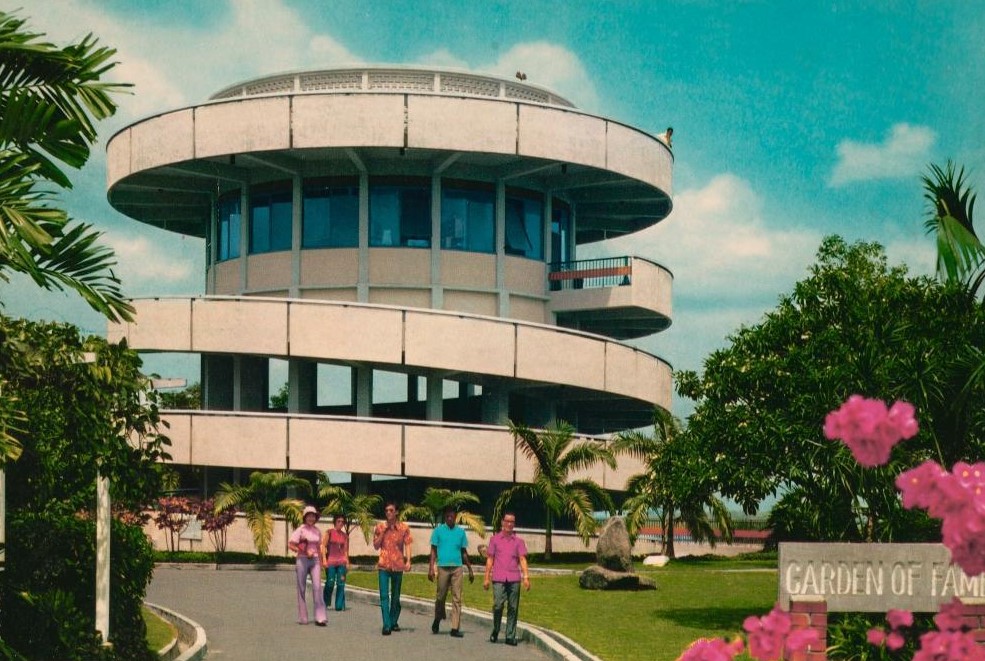 |
| Jurong Hill Park is situated atop Jurong Hill. Since its opening in 1970, the park has featured a three-story observatory tower that offered visitors, including foreign guests and government-invited investors, a panoramic view of the nearby Jurong Industrial Estate. Alongside the observatory tower, the park boasted a landscaped garden equipped with footpaths, benches, refreshment kiosks, public restrooms, and a “Garden of Fame”. In this garden, notable foreign dignitaries such as Queen Elizabeth II, Deng Xiaoping, and Dr. Albert Winsemius planted trees between 1969 and 1984. A total of about 30 trees were planted before the Garden of Fame was relocated to the compound of Jurong Town Hall. (Image Credit: Courtesy of the National Museum of Singapore, National Heritage Board) |
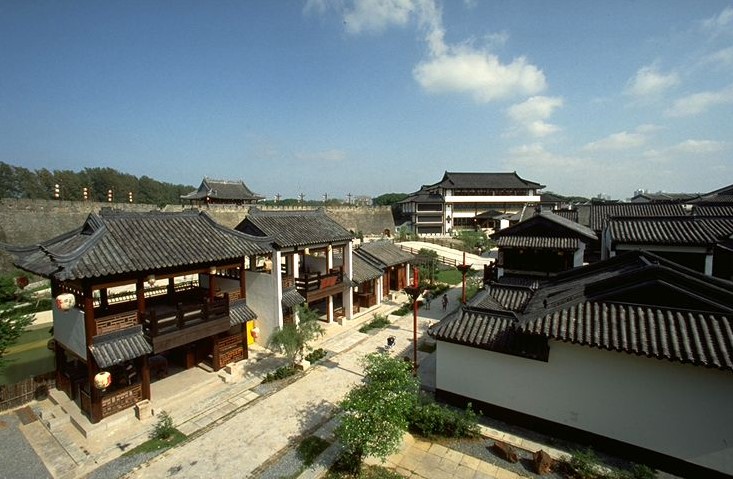 |
| The Tang Dynasty Village, also known as the Tang Dynasty City, was a movie studio and theme park located at 2 Yuan Ching Road. Launched in January 1992, this S$70-million development was owned by the Hong Kong-based company Far East Holdings International, which also owned the Sung Dynasty Village in Hong Kong. Modeled after the ancient Tang Dynasty’s capital city of Chang’an (today’s Xian), the village featured replicas of renowned landmarks like the Great Wall of China, Daming Palace, Huiqing Pool, Zhaozhou Bridge, and the seven-storey Wild Goose Pagoda. Unfortunately, the theme park experienced poor visitorship and was closed down in 1999. Despite attempts to revive it, including proposals to transform the site into a Shaolin Temple, the theme park was eventually demolished in 2008. (Image Credit: Ministry of Information and the Arts Collection, courtesy of National Archives of Singapore) |
References
Click the following PDF icon to view and download the reference list used for this page:


